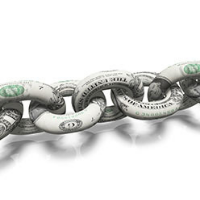Buy now, pay sooner – dynamic discounting
| 12-04-2018 | Lionel Pavey |

We live in a time of very low interest rates which translates to lower funding costs. However, at the same time, obtaining credit is becoming more difficult as banks are reluctant to lend in the ways that they did years ago. This is caused by the need for additional financial buffers to comply with all the regulatory issues that surround modern day banking. Credit is still available via other avenues – look at P2P lending for example. When all else fails, it is necessary to look at one’s own internal supply chain to see how financing can be facilitated. Here is a report on the practice of dynamic discounting.
Dynamic discounting
As a corporate is common to purchase goods and services on the basis of receiving an invoice and paying at a later date. It is normal to see invoices stating that payment must be made within 30 days of the invoice date – not the acceptance date. As an incentive to pay the invoice early many companies offer a discount – the classic example is called 2/10 net 30. Breaking down this code shows that a 2 per cent discount is offered on the face amount of the invoice if it is paid within 10 days of the invoice date, otherwise payment is expected within 30 days.
Whilst 2 per cent might not sound very tempting, we need to look at the mathematics that lie behind this:
On an invoice for EUR 1,000 this means a discount of EUR 20. If we decided not to use the discount and only pay after 30 days we would have held onto our EUR 1,000 for an extra 20 days – this being the difference between the early payment date and the standard payment date. At present, we might make 1 per cent interest per annum on our bank account. The interest earned on EUR 1,000 for 20 days at 1 per cent, would reward us with EUR 1.11 – or, put in other words – EUR 18.89 less than if we paid early.
Why offer a discount?
• The supplier wants to lower their banking costs and improve their ratings
• The supplier needs the money
• Banks are not willing to lend money to the supplier
• The supplier is worried about their level of exposure to credit risk and counterparty risk
• It gives a supplier a useful insight into the business practices of their clients – if they calculated the advantage of taking the discount and declined, could there be inherent problems with the financial health of the client
Also, generating your own internal supply chain finance operation lessens the reliance you have on external funding from banks or factoring agencies.
A more modern adaptation of this practice is the development of discounts that are truly dynamic and work on a sliding scale. The highest discount is given for the fastest payment, and then progressing down in stages till the original invoice settlement date. This gives buyers an opportunity to still receive a discount, but not being tied down to the original 10 day period.
Irrespective of the financial gains offered by discounting, a more important aspect is positive growth in the working relationship between supplier and client. By supporting each other the bonds of trust increase and can lead to new and better opportunities together.
If you are interested to know what the effect of these changes can be on a coupon payment and calculation, please contact us for more detailed information.

Cash Management and Treasury Specialist











